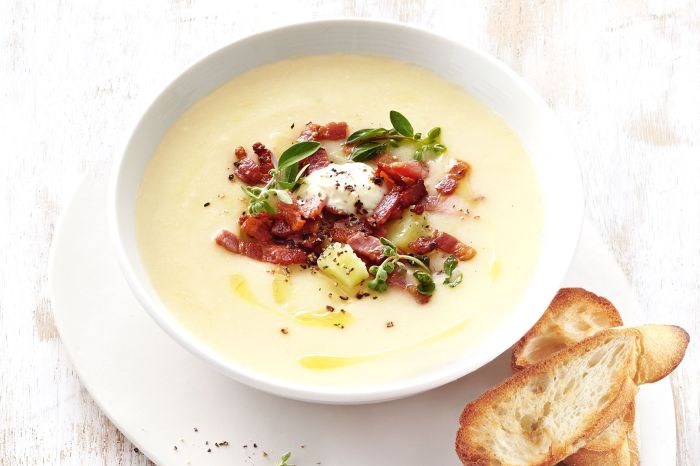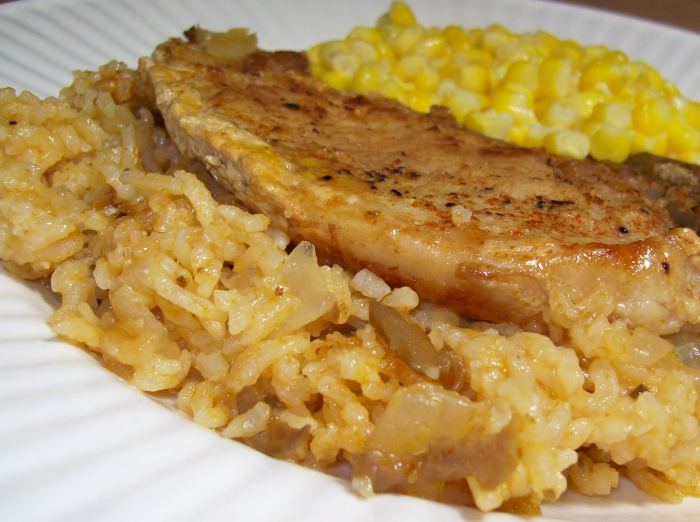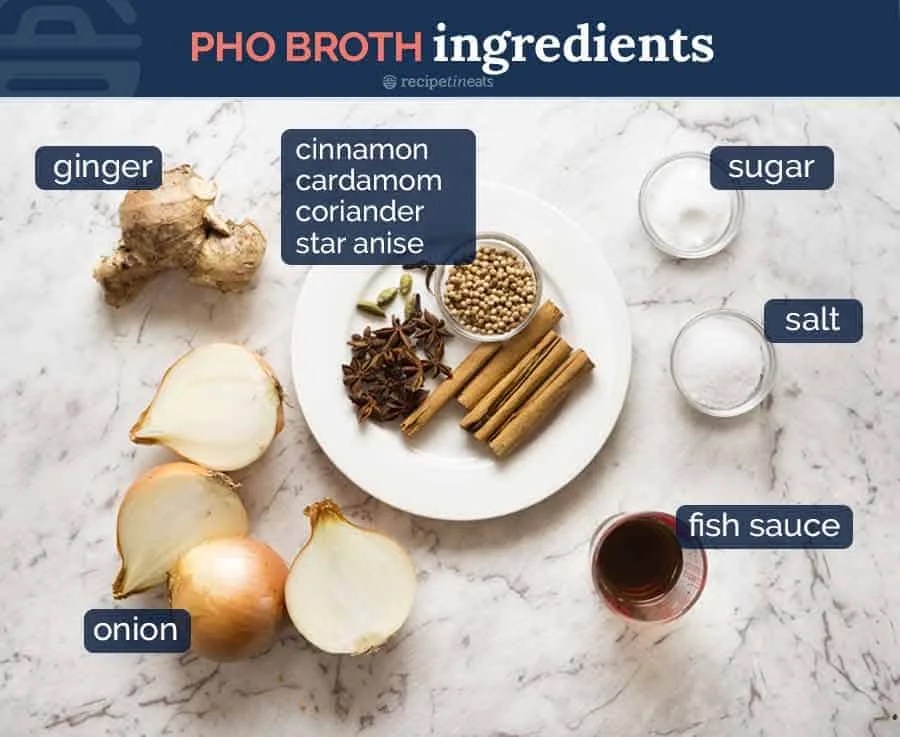Mug Soup Recipe Variations
Mug soup recipes – Mug soups offer a delightful array of flavor profiles and culinary possibilities. Their convenience and single-serving nature make them perfect for quick meals, late-night snacks, or even elegant appetizers. The versatility of mug soups allows for endless customization, catering to diverse tastes and dietary needs.
Diverse Mug Soup Recipes
- Asian-Inspired Miso Soup: A comforting blend of miso paste, silken tofu, seaweed, and scallions, offering a savory umami flavor.
- Mexican-Style Tortilla Soup: A spicy and vibrant soup featuring diced tomatoes, corn, black beans, and a touch of chili powder, topped with tortilla strips.
- Italian-Style Minestrone: A hearty and flavorful soup with small pasta, various vegetables (such as zucchini, carrots, and beans), and a rich tomato broth.
- French Onion Soup (adapted for mug): A classic French soup with caramelized onions, beef broth, and a crouton topped with melted Gruyère cheese (consider a smaller portion for a mug).
- Indian-Spiced Lentil Soup: A warming and aromatic soup with red lentils, coconut milk, ginger, and a blend of warming spices like cumin, coriander, and turmeric.
Low-Sodium Mug Soup Recipes
Adapting recipes for low-sodium diets involves careful ingredient selection and substitution. The following table illustrates how to reduce sodium content in popular mug soup recipes.
| Ingredient | Original Amount | Low-Sodium Substitution | Amount |
|---|---|---|---|
| Chicken Broth | 1 cup | Low-sodium chicken broth or homemade broth | 1 cup |
| Canned Tomatoes | 1/2 cup | Fresh, diced tomatoes or no-salt-added canned tomatoes | 1/2 cup |
| Soy Sauce | 1 tsp | Low-sodium soy sauce or tamari, or a combination of lemon juice and herbs | 1 tsp (or adjust to taste) |
| Pre-packaged seasoning blends | 1 tbsp | Individual herbs and spices (e.g., basil, oregano, thyme, garlic powder) | Adjust to taste |
Adaptable Mug Soup Recipes for Dietary Restrictions
Many mug soup recipes can be easily modified to accommodate various dietary needs.
- Vegetarian Chili:
- Vegetarian Adaptation: Omit the ground beef. Enhance the flavor with additional beans, vegetables, and spices.
- Vegan Adaptation: Use vegetable broth instead of beef broth. Ensure all other ingredients are vegan-friendly.
- Gluten-Free Adaptation: This recipe is naturally gluten-free.
- Creamy Tomato Soup:
- Vegetarian Adaptation: This recipe is naturally vegetarian.
- Vegan Adaptation: Replace heavy cream with full-fat coconut milk or cashew cream.
- Gluten-Free Adaptation: This recipe is naturally gluten-free.
- Chicken Noodle Soup (adapted for mug):
- Vegetarian Adaptation: Substitute the chicken with mushrooms or chickpeas for a hearty vegetarian version.
- Vegan Adaptation: Use vegetable broth instead of chicken broth. Replace the chicken with mushrooms or other vegetables.
- Gluten-Free Adaptation: Use gluten-free noodles.
Ingredient Selection and Preparation
Choosing the right ingredients and preparing them properly is crucial for creating delicious and nutritious mug soups. The quality of your ingredients directly impacts the overall taste and texture of the final product.
Best Vegetables for Mug Soups
- Spinach: Cooks quickly, adds nutrients, and wilts easily, perfect for a quick mug soup.
- Carrots: Adds sweetness and vibrant color; requires slightly longer cooking time than spinach.
- Zucchini: Mild flavor, cooks quickly, and retains its texture well.
- Mushrooms: Earthy flavor, adds depth and texture, and can be sautéed or added directly to the soup.
- Onions: Adds a base flavor and can be sautéed for a deeper flavor profile.
Preparing Mug Soup Ingredients
- Chopping Vegetables: Dice or finely chop vegetables to ensure even cooking and easy consumption from a mug.
- Browning Meat: If using meat, brown it in a small pan before adding it to the soup for enhanced flavor.
- Measuring Ingredients: Use accurate measurements to ensure consistent results.
- Preparing Broth/Stock: Heat broth or stock gently before adding other ingredients.
Selecting High-Quality Broths and Stocks
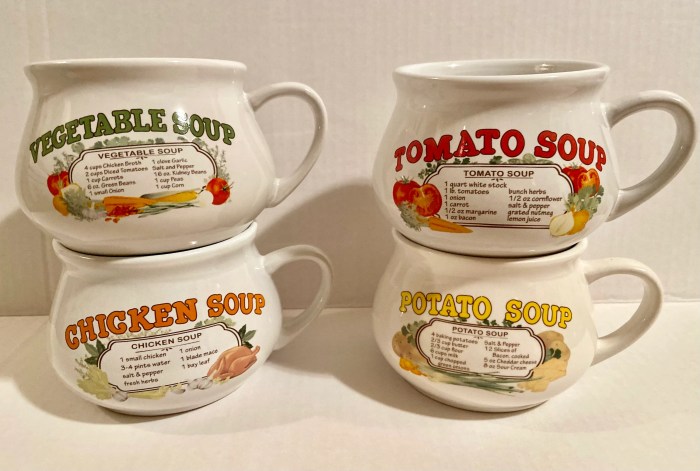
Source: etsystatic.com
The foundation of any good mug soup lies in the quality of its broth or stock. Different broths offer distinct flavor profiles, impacting the overall taste of your soup.
| Broth Type | Flavor Profile | Best Uses | Considerations |
|---|---|---|---|
| Chicken Broth | Savory, rich, umami | Chicken noodle soup, creamy tomato soup, vegetable soups | Choose low-sodium options if needed. |
| Beef Broth | Hearty, savory, deep umami | French onion soup, hearty vegetable soups, lentil soups | Look for options with good body and flavor. |
| Vegetable Broth | Versatile, savory, can be mild or robust depending on vegetables used | Many types of vegetable soups, lentil soups, vegetarian chili | Consider low-sodium options. Homemade broth allows for precise flavor control. |
Cooking Methods and Techniques
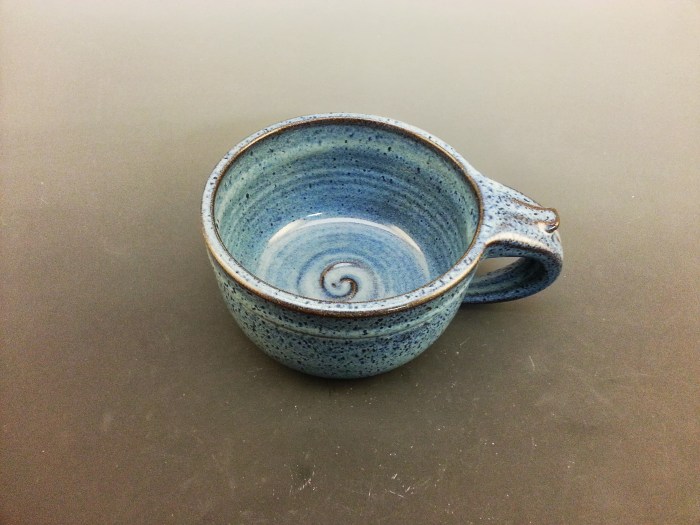
Source: cloudfront.net
Mug soups can be prepared using various methods, each offering unique advantages and disadvantages in terms of cooking time and texture.
Microwave vs. Stovetop Cooking
- Microwave: Faster cooking time, convenient, but can sometimes result in uneven heating or a less developed flavor.
- Stovetop: Allows for more control over cooking temperature and results in a more developed flavor, but requires more time and attention.
Importance of Seasoning
Proper seasoning is crucial for creating flavorful and balanced mug soups. Experiment with different herbs and spices to find combinations that complement the other ingredients.
- Basil and Oregano: Italian-style soups
- Cumin and Chili Powder: Mexican-style soups
- Ginger and Turmeric: Asian-inspired soups
- Thyme and Rosemary: Hearty vegetable soups
- Garlic Powder and Onion Powder: Versatile additions to many soup types
Creating a Layered Mug Soup
Layering ingredients in a mug soup creates a visually appealing and flavorful experience. The process involves adding ingredients in stages, starting with denser components at the bottom and lighter elements on top.
- Add the base layer: This could be cooked grains, beans, or vegetables.
- Add the liquid component: Pour in your broth or stock.
- Add heartier ingredients: Add denser ingredients like meat or vegetables.
- Add lighter ingredients: Top with lighter ingredients like herbs, cheese, or a swirl of cream.
- Garnish: Add your final garnishes for visual appeal and flavor enhancement.
Serving Suggestions and Enhancements: Mug Soup Recipes
Elevating the presentation and taste of your mug soup is easy with the right garnishes and accompaniments.
Garnishes for Mug Soups, Mug soup recipes
- Fresh Herbs: A sprig of parsley, cilantro, or basil adds freshness and visual appeal to almost any soup.
- Croutons: Small, crispy croutons add texture and a savory element, particularly well-suited to heartier soups.
- Shredded Cheese: A sprinkle of cheese adds richness and creaminess, especially to tomato-based or creamy soups.
- Sour Cream or Yogurt: A dollop of sour cream or yogurt adds tanginess and creaminess, complementing many flavors.
- Avocado: Diced avocado adds a creamy texture and healthy fats, perfect for Mexican-inspired or vegetarian soups.
Bread and Crackers Pairings
| Bread/Cracker Type | Texture | Flavor Profile | Best Mug Soup Pairing |
|---|---|---|---|
| Crusty Bread | Hard, crisp | Savory, slightly tangy | Hearty vegetable soups, French onion soup |
| Multigrain Crackers | Crisp, slightly chewy | Nutty, slightly sweet | Creamy tomato soup, lentil soup |
| Cornbread | Soft, crumbly | Sweet, slightly savory | Chili, tortilla soup |
Creative Serving Ideas
- Themed Mugs: Use mugs with designs that complement the soup’s theme (e.g., a Halloween mug for a spooky chili).
- Layered Presentation: Create visually appealing layers within the mug.
- Edible Garnishes: Use edible flowers or herbs as decorative garnishes.
- Miniature Croutons or Breadsticks: Serve with small, bite-sized accompaniments.
- Unique Mug Shapes: Use unusual mug shapes to enhance the presentation.
Recipe Customization and Creativity
Mastering the art of mug soups involves understanding common pitfalls and embracing creative ingredient combinations.
Common Mug Soup Mistakes
- Overcrowding the mug: Don’t overfill the mug; leave space for the ingredients to cook evenly and prevent spillage.
- Using too much liquid: Too much liquid will result in a watery soup. Adjust the liquid amount based on the ingredients’ water content.
- Ignoring seasoning: Don’t neglect seasoning. Taste and adjust as needed throughout the cooking process.
Adapting Existing Soup Recipes
- Reduce the recipe size: Proportionally reduce the ingredients in a larger recipe to fit a single serving.
- Adjust cooking time: Cooking times will likely be shorter in a mug due to the smaller volume.
- Consider ingredient texture: Choose ingredients that will cook evenly and maintain their texture in a mug.
Unique Mug Soup Recipes
These recipes showcase unexpected flavor combinations that elevate the mug soup experience.
| Ingredient | Quantity | Preparation | Notes |
|---|---|---|---|
| Sweet Potato and Chorizo Mug Soup | |||
| Sweet potato | 1/2 cup, diced | Cook until tender | |
| Chorizo | 2 oz, crumbled | Cook until browned | |
| Chicken broth | 1 cup | Heat | |
| Spices (cumin, paprika) | To taste | ||
| Butternut Squash and Apple Mug Soup | |||
| Butternut squash | 1/2 cup, cubed | Cook until tender | |
| Apple | 1/4 cup, diced | ||
| Vegetable broth | 1 cup | Heat | |
| Maple syrup | 1 tsp | ||
| Cinnamon | Pinch | ||
| Black Bean and Coconut Curry Mug Soup | |||
| Black beans | 1/2 cup, canned | Rinse and drain | |
| Coconut milk | 1/2 cup | ||
| Curry powder | 1 tsp | ||
| Lime juice | 1/2 tsp | ||
| Cilantro | 1 tbsp, chopped | ||
Essential FAQs
Can I make mug soups ahead of time?
Mug soups offer a convenient and comforting meal, perfect for a quick lunch or a cozy evening. If you’re looking for inspiration beyond the usual recipes, consider utilizing leftover turkey; check out these fantastic ideas for leftover turkey recipes soup to get started. Then, adapt your favorite to a smaller portion for a delicious and satisfying mug soup experience.
The possibilities are endless!
While some ingredients might not hold up well, you can prepare many components (like chopping vegetables or cooking meat) in advance. Assemble the soup just before cooking for best results.
What kind of mugs are best for mug soups?
Oven-safe mugs are ideal for stovetop cooking. For microwave use, choose mugs that are microwave-safe and have a wide enough opening for easy stirring and eating.
How do I store leftover mug soup?
Store leftovers in an airtight container in the refrigerator for up to 3 days. Reheat gently in the microwave or on the stovetop.
Can I freeze mug soup?
Freezing mug soup is generally not recommended, as the texture may change upon thawing. It’s best enjoyed fresh.

